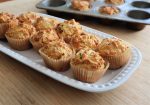Every parent has a plan for introducing little ones to something new, and brushing their teeth and teaching a good oral care routine is no different.
The makers of CloSYS toothpaste, oral rinses and oral sprays offer tips and insight on starting kids off right when it comes to oral care.
1 Baby teeth erupt from 6 months to 2½ years. Unfortunately, tooth eruption makes gums sore and inflamed, leading to unhappy babies. Use a gentle child’s toothbrush as the bristles are designed to be kind to inflamed tissues.
2 Diet is the key to healthy teeth; limit sugar and starchy foods.
3 Brush baby teeth with plain water using a soft toothbrush. It will remove plaque, massage gums and keep kids healthy.
4 Schedule the first dental exam after the baby’s first birthday. Remember, for kids and adults, plaque is not fully removed by brushing and rinsing alone. The dentist or hygienist can remove plaque and tartar, reducing the risk of cavities. Some toothpastes slow the regrowth of plaque, as well as strengthen enamel. Ask the dentist how often to visit, as plaque buildup varies from one baby to the next.
5 Start a routine of a twice daily brush and oral rinse. The two points of emphasis for toddlers/kids are to (1) not to swallow toothpaste and (2) to brush for 2 minutes. Using a timer can help get them in this habit. When introducing fluoride toothpaste, always consult with your dentist or doctor first.
6 At age 2, children can begin using a pea-sized amount of fluoride toothpaste. Fluoride toothpaste will strengthen enamel and protect from cavities. Choose a gentle toothpaste that does not contain sodium lauryl sulfate as it is known to inflame tissues and cause oral sores. Again, consult a dentist or doctor before using fluoride toothpaste with children younger than 2.
7 Be sure to read “Drug Facts” on the label and follow the instructions when using fluoride toothpaste.
8 Parents should begin helping their children use dental floss and/or interdental brushes between ages 2 to 6, and children should be flossing on their own by age 10.
Bacteria convert food, debris and sugars into a slimy substance called dental plaque. It grows along the gum lines and between teeth. Getting food and debris and plaque from between teeth is difficult — that’s where dental floss comes in. Interdental brushes also reach between teeth and can be dipped in fluoride toothpaste before use to increase prevention and effectiveness.











